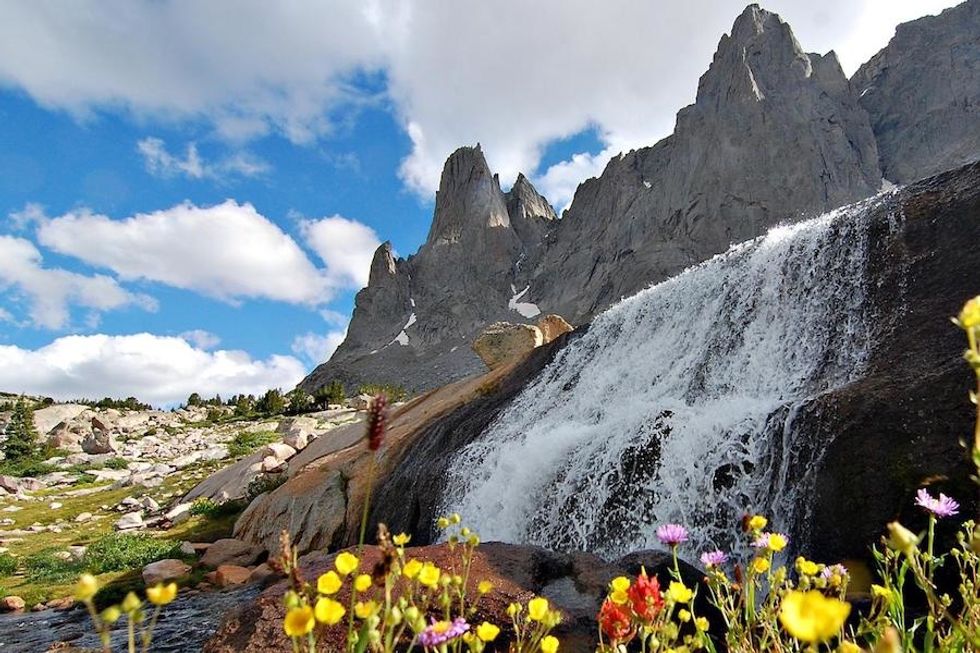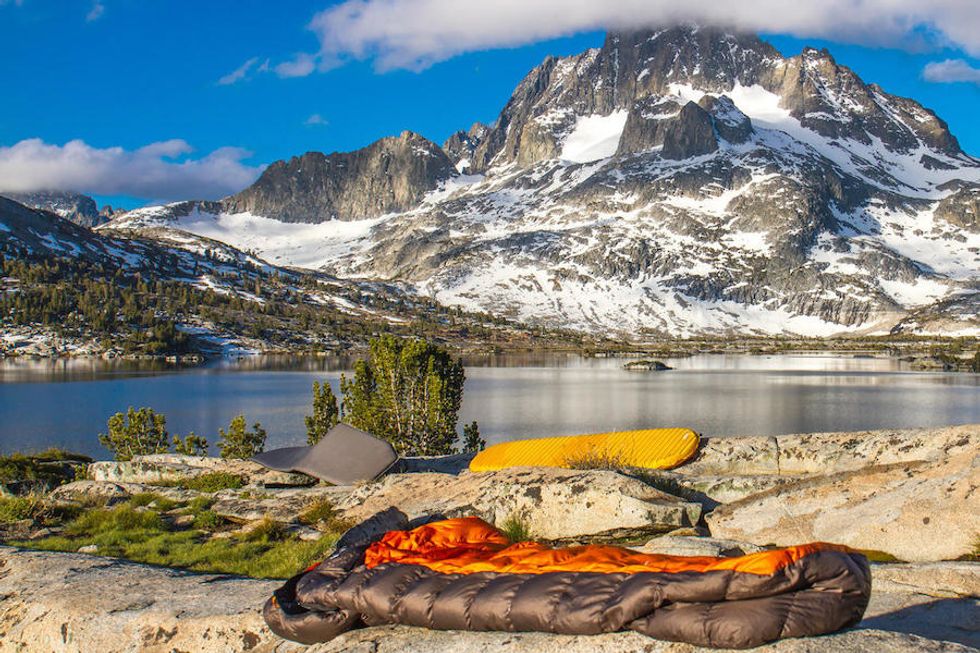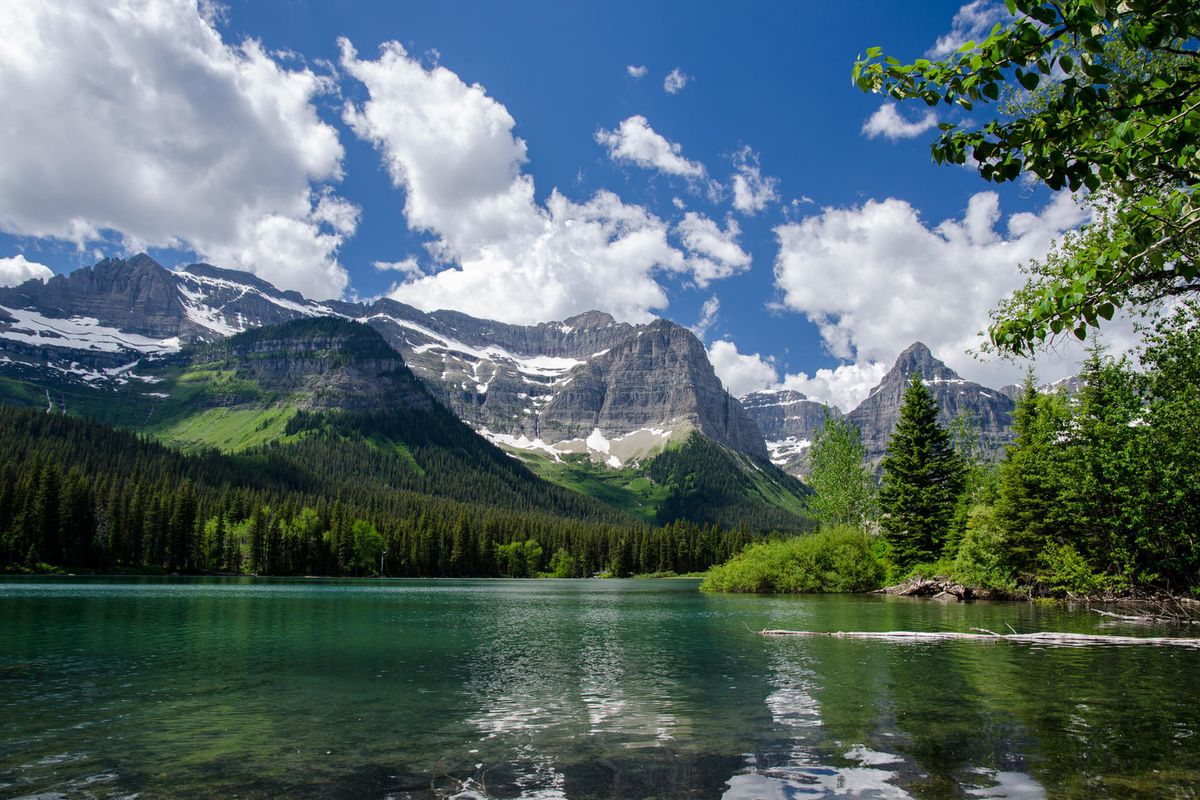Does summertime have you daydreaming of wandering off into the wilderness and spending nights around the campfire?
Take one of these itineraries into the wild, whether you've already crushed out the wonders of Yosemite and the Sierra and are looking to hike farther afield, or you've got a hankering to strap on a pack and revisit some of your most beloved Northern California vistas.

Cirque of the Towers, Wind River Range
It is likely that every location on this list will earn the tag of "most beautiful," and we'll admit to a certain amount of bias in that regard. Nevertheless, Wyoming's remote and rugged mountain range west of Lander—an outdoor mecca in its own right, where National Outdoor Leadership School is headquartered—is clearly the most beautiful. And, for the time being, it is relatively remote. While the Tetons and Yellowstone get all the tourist attention to the north, those who treasure the outdoor experience make their way to the Wind River.
Cirque of the Towers can be completed in a long day, but slow down the pace and break the trip into at least two days, making camp high in the Rockies.
Olympic National Park
While it may concern you that the Olympic Peninsula is the wettest place in the Lower 48, have no fear. Summers in the Pacific Northwest are well worth the cold, wet, and long winters, and the Pacific Coast here is a terrain unlike any other. Hike along sandy beaches among the sea stack giants, tide pools, nearly unbroken old-growth forest and river crossings on the South Coast Wilderness Trail between La Push and the Hoh River. Note: take a friend, because this trail is one-way.
The Chicago Basin via Vallecito Reservoir
Attracting over 100,000 visitors per year, the Chicago Basin has certainly cemented its reputation as one of the best backpacking experiences in the West. The San Juan Mountains, like the Wind River Mountains, are rugged and remote in the southwestern corner of Colorado. But unlike the Wyoming cordillera, the mountain town experience in Telluride and well developed infrastructure attract far more tourists—especially Texans. Regardless, escape into the backcountry is as simple as hopping on a train. The Weminuche Wilderness south of Silverton boasts fourteeners, alpine lakes and wildflower meadows, and a well developed network of trails and dispersed campgrounds. The Chicago Basin takes the crown, with no fewer than three fourteeners, some non-technical, within a couple miles of the basin. The fastest approach can be made by the Durango-Silverton Narrow Gauge Railroad, which drops backpackers at Needleton about 6 miles away, but backpackers with time should approach from via the Vallecito Reservoir, which is accessible by car.
Maroon Bells-Snowmass Wilderness
Another Colorado classic, the Maroon Bells-Snowmass Wilderness contains some of the most photographed wilderness scenes in Colorado. The hematite peaks are certainly unique, but the wilderness has more to offer than day trips to the base of the hematite peaks. The Four Pass Loop summits four passes higher than 12,000 feet, with fantastic views of the iron-rich and ruddy hematite along the way, not to mention the alpine meadows and western Colorado wildlife.
The Wallowa Mountains
Perched in the northeastern corner of Oregon, the Wallowa Mountains have been called the Alps of the West, and above the Swiss chalet-style cabins near Wallowa Lake, Ice Lake makes for a fantastic alpine backpacking destination. Side trips from the lake, resting above 7,800 feet, can fill an entire weekend, and the culture of Joseph, Oregon, is a required experience. Be sure to stop in at the Stubborn Mule on a Friday night, where there's sure to be live music and a host of local color, or Terminal Gravity for microbrews and community seating.

John Muir Trail
There are no secrets about the John Muir Trail, one of the most beautiful thru-hikes in the country, and the most obvious choice on this list is also one of the hardest to access. Extending from Yosemite National Park south along the high Sierra to Mount Whitney, the trail passes through some of the most scenic mountain wilderness in the Lower 48. For those who seek to complete the entire trail—we've broken it into four sections, Yosemite to Red's Meadow, Red's Meadow to Piute Pass, Piute Pass to Woods Creek, Woods Creek to Mount Whitney—preparation is key. Permits are available by reservation, and they go quickly, just like the few first-come, first-served permits that are distributed on the day of your trip. Flexibility is your friend here, and the trip is worth it.
Pacific Northwest Trail, Glacier National Park
The Pacific Northwest Trail extends from Glacier National Park in Montana to the Olympic Peninsula in Washington, and the first section of the country's newest scenic trail, from Glacier to Polebridge, Montana, begins on the Canadian border and traverses Glacier's stunning backcountry wilderness, including Stoney Indian Pass and Kootenai Lakes, Janet Lake, and Lake Francis.
The Uinta Highline, Uinta Mountains
Remote and rugged, the Uinta Mountains east of Salt Lake City offer some of the most demanding hiking opportunities in the West. Views abound along the 100-mile trail, which seldom drops below 10,000 feet, including views of Naturalist Basin, so named for Louis Agassiz, a naturalist and educator whose name adorns one of the surrounding peaks. The remote character of the High Uinta Wilderness, encompassing more than 450,000 square miles, makes for a more colorful experience of nature, and encounters with wildlife seem to be more common here than elsewhere. There are logistical benefits, too: You don't need a permit to hike here. Take advantage of the freedom and explore the wilderness at-will.
Reflection Canyon
Dangerous, difficult, and a completely unique wilderness experience compared to the western mountain ranges that rise to the top of this list, Reflection Canyon in Glen Canyon is a relatively short and intense foray into the slot canyon wilderness of Grand Escalante Staircase in southern Utah. The trail, for lack of a better word, is a scant 20 miles, and navigation in this labyrinthine canyonland requires attention to waypoints and landmarks that may or may not be obscure to less experienced hikers. Reflection Canyon is a special place, especially for photographers, who should spend a night here to capture the best photographic opportunities.
Linville Gorge Wilderness
The Blue Ridge Mountains of North Carolina offer some of the most scenic mountain wilderness on the East Coast, and for those wishing to experience the backcountry on a budget, the Linville Gorge Wilderness is the way to go. The 22-mile East Rim Trail requires just a quick overnight, though hikers can extend the trip over a weekend. Called the Grand Canyon of North Carolina, views here abound, as does the wildlife, which includes wild turkeys and bears. And for those who are looking for a few more miles and a truly unforgettable hike, consider the nearby Art Loeb Trail. Give it a try and find out why National Geographic called it one of the 30 best hikes in North America.





















